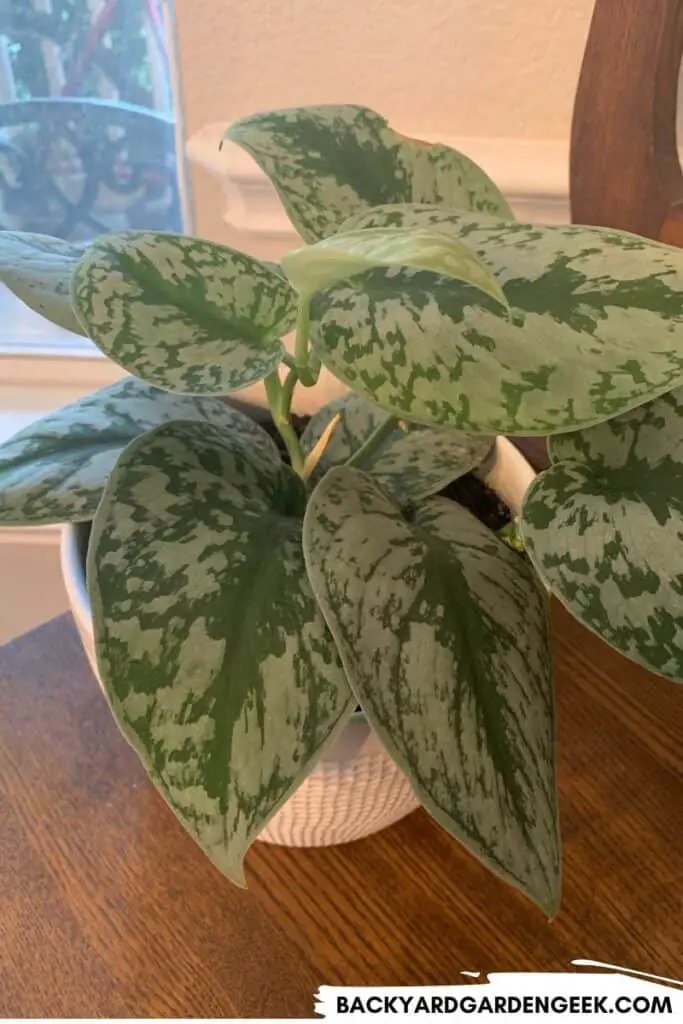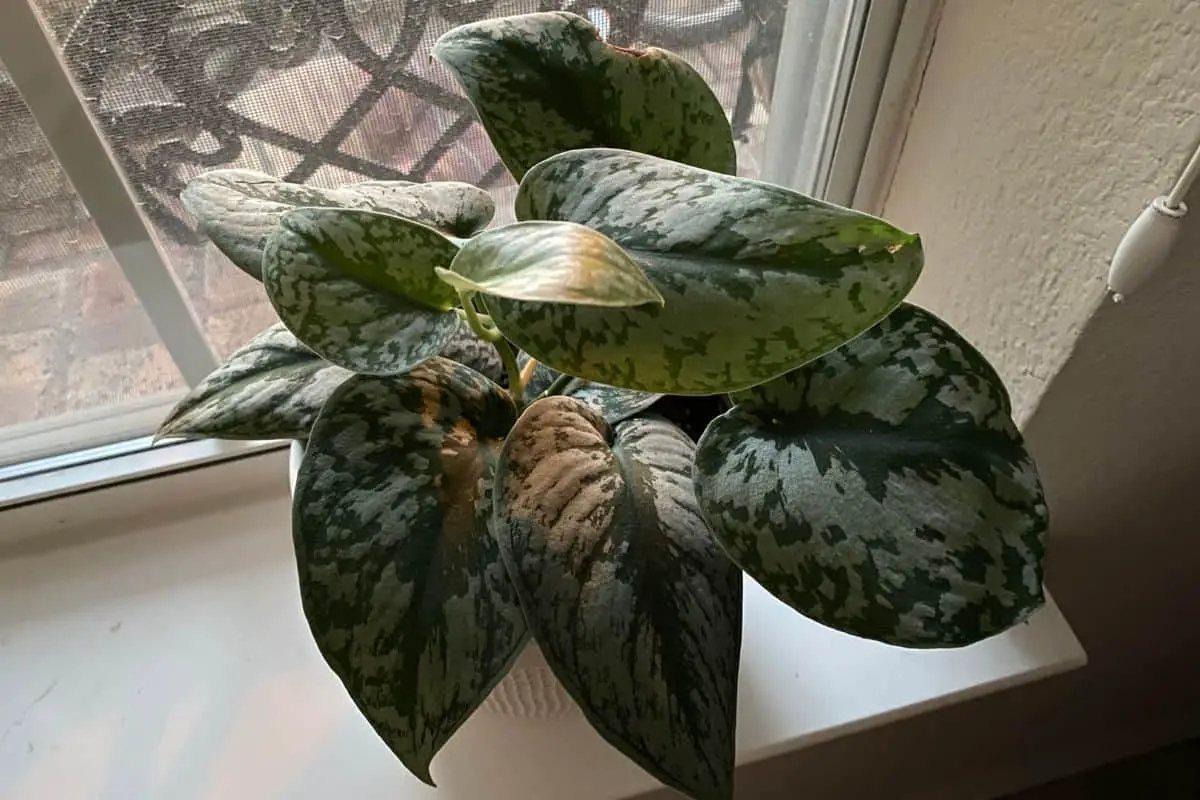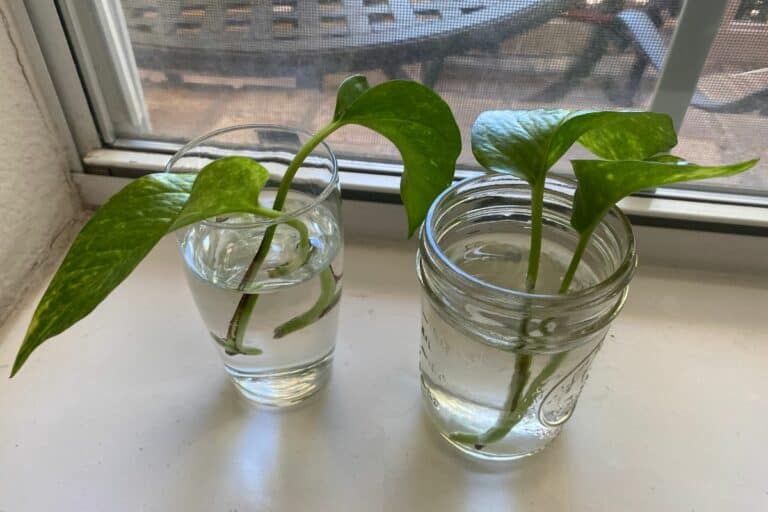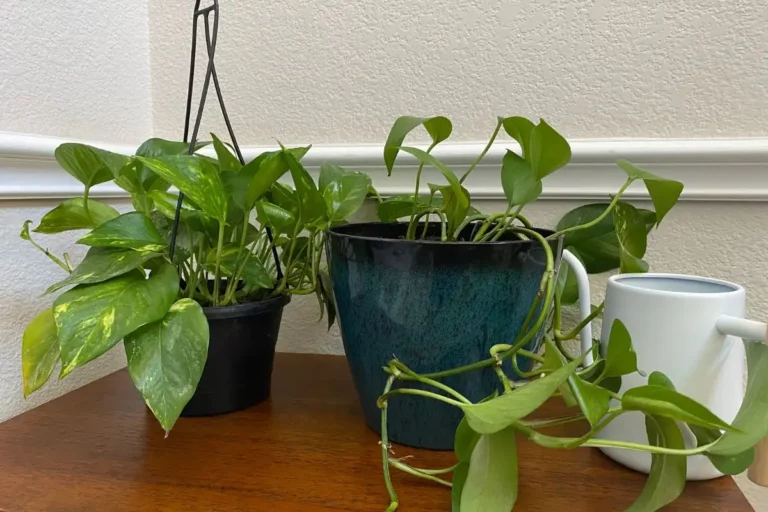Can Pothos Survive Winter? Tips for Keeping Plants Safe
Are you concerned about keeping your pothos plants healthy during winter? Or maybe you’re trying to figure out if pothos can survive winter weather conditions or if they need the protection of a climate-controlled environment.
Winter can be tough on plants, but I’ve got a few simple tips that’ll keep your pothos happy and healthy during the colder months.
Pothos plants (Epipremnum aureum) can survive winter if they’re protected from cold, harsh weather. They prefer moderately warm temperatures, usually 70-90°F (21-32°C), as well as indirect light and occasional watering, so it’s best to keep them indoors or in climate-controlled greenhouses.
Pothos are relatively easy to care for given the right environmental conditions, but there are certain things you can do during winter to ensure your plants remain healthy, have plenty of nutrients, and look great all winter long.
A quick heads up: If you’d like to follow the recommendations I’ve laid out in this article, you should consider picking up some nice-looking indoor planters since you certainly don’t want to use outdoor planters inside your home. I’d also encourage you to get some liquid pothos fertilizer, which is what I use to keep my pothos healthy year round.
When it comes to caring for pothos during winter, there are four things you need to keep in mind:
1. Maintain Mild to Moderately Warm Temperatures
I love decorating my patio and front porch with potted plants during the milder months of the year, but I make sure to bring my pothos inside during summer and winter to avoid some of the more extreme temperatures that occur during those months.
Although most pothos varieties can survive temperatures as low as 50°F (10°C), they do best in temperatures between 70-90°F (21-32°C) because they’re native to tropical regions. A good rule of thumb is this: If the temperature in your home is comfortable for you, it’s probably just fine for your pothos.
Keep in mind that various conditions in your home can cause temperatures to drop or spike a bit, so be sure to place your pothos far enough away from windows so that the plant isn’t exposed to cold drafts or glass that’s icy to the touch since that’ll potentially damage your plant’s leaves.
You should also avoid placing your pothos right next to a heat source, such as a fireplace or radiator, as these can emit too much heat and burn or otherwise damage your plant.
As a general rule, your pothos will do best when placed at least 10-12 inches from drafty spots or heat sources.

2. Give Plenty of Indirect Light
Once you’ve brought your plant inside, you’ll want to find a home for it near as near a window as possible to take advantage of regular, indirect light.
Don’t have any available window space? That’s okay. Pothos are very forgiving plants, and although they may not be at their best in low light, they’ll survive the winter and recover once they’re exposed to more indirect daytime light.
A few years back, one of my co-workers placed a pothos cutting in a mason jar with water in a restroom that didn’t get any natural light. That little plant survived an entire year in that restroom before someone finally decided to take it home.
Was that the best condition for a pothos? No. Did it survive? It sure did.
Just be warned: If your pothos isn’t getting enough light, it might get leggy and straggly, and variegated varieties could experience a greening of the leaves and thus lose some of their colorful patterns.
3. Avoid Overwatering
During the summer months, you’ll need to water your pothos every 1-2 weeks depending on the outside temperatures, but in winter, you’ll want to cut back on your watering. I recommend doing so only once every 2- 4 weeks to compensate for the milder temperatures and lack of abundant natural light.
Be sure to keep an eye on your pothos and take note of soil dampness. If your plant’s near a heat source (like a fireplace, heater, or radiator), the ambient heat can cause the soil to dry out faster.
Please note that it’s common for pothos to drop some leaves in the winter, but yellowing leaves are a sign of overwatering. If you think your plant’s been overwatered, let the soil dry out completely before watering again. You may even want to bring it a little closer to a heat source for a few days to help dry it out.
4. Prepare for Winter During Fall
One way to ensure your pothos plant thrives in the winter is to give it a boost when fall rolls around.
Here are a few things you can do to get your pothos winter ready:
First, trim off any brown or yellowing leaves. They’re not going to heal, and after you’ve done so, your plant will be healthier moving forward.
Second, consider adding a fertilizer that’s good for pothos plants, either a liquid fertilizer specifically for pothos or an all-purpose, slow-release fertilizer that’ll give your plant a final boost before the winter months arrive.
Just be very careful when measuring out any all-purpose fertilizer because pothos generally need only 1/4 to 1/2 the amount of fertilizer that’s recommended by the manufacturer. Better to err on the side of caution than to over-fertilize and damage your plant!
Finally, consider repotting your pothos to prepare for plentiful growth come spring. Pothos plants can and should be repotted every 2-3 years in pots that are 2 inches wider than the previous pot since this will provide plenty of space for additional growth.
I recommend choosing a planter with drainage holes and a water tray to help avoid over-watering in winter. If you’ve got a cachepot (a planter without any holes), you can simply keep your pothos in its grow pot and place the entire thing in your planter. This will give you plant a nice indoor look while allowing excess water to drain from the soil.
If you’re not planning to repot your pothos in the fall, you shouldn’t do so during winter. Just wait until spring since your plant will have more energy at that time to acclimate to its new home.
Can Pothos Stay Outside for the Winter?
While pothos can grow outside successfully in certain hardiness zones (particularly zones 10-12), various regions around the world (like the southern parts of Florida) consider pothos to be invasive and recommend they only be grown in pots.
Pothos are resilient plants that can survive in minimum temperatures of 50°F (10°C), if they’re exposed to winter freezing (especially freezing temperatures), they likely won’t survive the shock.
If you’ve got potted pothos plants, move them indoors during the winter. You can also place them in the garage or in a climate-controlled greenhouse.
But remember that garages aren’t the best location for long-term pothos storage, so I recommend putting the plant under a grow light to ensure it gets enough light to remain healthy during winter. I use a timer in my garage so that I don’t have to manually turn my grow light on and off each day.
If you plant to store your pothos in a garage or climate-controlled greenhouse, you’ll need to keep a close eye on temperatures and soil moisture. If the garage gets too cold, your pothos won’t like that, and if you let the soil dry, there’s a good chance you might experience leaf loss and other signs of pothos damage.

Winter Watering and Fertilization: What Should I Do?
Pothos plants are relatively easy to maintain indoors, even during harsh winters, because they’re able to adapt to fewer daylight hours for several months at a time.
Pothos plants should be watered every 2-3 weeks during winter. Smaller plants need 4-6 ounces (118-177 ml) while larger ones need 8-10 ounces (236-295 ml). Fertilizer is generally unnecessary during winter months since pothos plants do best when fertilized in late fall or early spring.
I mentioned earlier that it’s important to carefully consider your watering and fertilization schedules, so I want to break down my process here in a few simple steps. Let’s start with water.
My watering schedule looks like this during winter:
- Week 1: I give my small pothos plants 4-6 ounces of water (118-177 ml) and my larger ones 8-10 ounces (236-295 ml).
- Week 2: No watering.
- Week 3: I test the soil using a moisture meter. If it’s still moist or wet, I don’t add any additional water. If it’s mostly dry, I repeat Step 1, giving the plant another moderate watering.
If your plant’s leaves begin to yellow or if they become soft and limp, chances are you’ve overwatered. Place the plant closer to a heat source and let the soil fully dry before watering again.
Now let’s take a quick peek at my yearly fertilization routine:
- November: In the lead up to winter, I give my pothos plants a little boost with some liquid fertilizer.
- December-February: No further fertilization needed. If you fertilize during these months, you might increase the likelihood of brown leaves on your pothos plant.
- March: As the temperatures begin to warm, I give my pothos plants a slow-release, all-purpose fertilizer.
Just be sure you’re giving yours a diluted mixture. You don’t want to accidentally over-fertilize them!
Long story short, with a little preparation and care, your pothos plants will do just fine during the cold winter months. Bring them inside, give them just enough water, and offer them plenty of indirect light. If you do that, you’ll have a very happy pothos come spring!
Additional Information
If you’d like to read more about pothos plants, check out these related articles:





